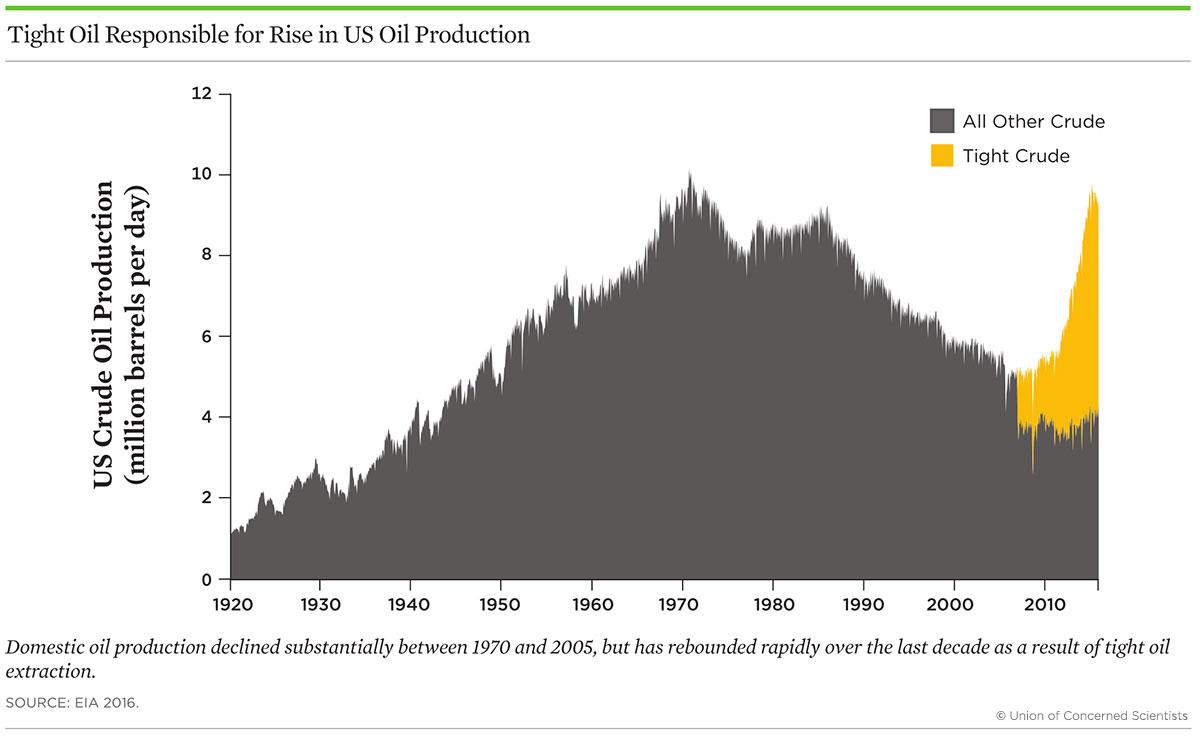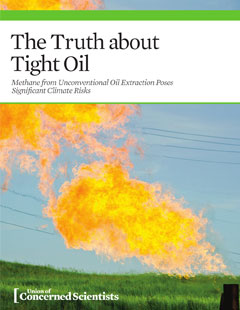Between 2010 and 2015, US oil production reached a 40 year high, growing from 2 billion barrels a year to just under 3.5 billion. This rapid change reversed a decade of declining domestic production and can be traced to a single resource: tight oil.

Found in limestone and shale deposits, tight oil isn’t extracted from wells like conventional oil, but is removed with hydraulic fracturing, or “fracking”—a process that also releases methane, a potent greenhouse gas. Although methane can be captured and used for energy, many industry operators have managed methane inefficiently, either releasing (“venting”) or burning (“flaring”) it.
Both venting and flaring carry profound implications for the climate—and both require increased scrutiny, tracking, and regulation.
Methane and tight oil
Fracking for tight oil involves drilling downward for up to 10,000 feet, then horizontally for thousands more feet. Millions of gallons of pressurized water, sand, and chemicals are then used to create fissures in the rock and release oil, which is pumped out.
Methane is trapped in the same rock deposits as tight oil and is also freed by fracking. At the surface, it can be captured and used as natural gas to produce electricity. Absent the appropriate regulations, however, venting, flaring, mismanagement, and leaks are wasting methane's potential energy and generating an eye-opening amount of heat-trapping emissions—an amount equivalent to that of 60 million cars every year, according to one conservative estimate.
Measuring methane
Mitigating tight oil’s harmful climate effects means managing the methane it produces—but quantifying methane emissions is notoriously difficult. “Bottom-up” accounting is the most widespread method, and involves estimating the emissions based on assumptions about the well, equipment, and other variables. “Top down” accounting is also used, in which methane levels are measured atmospherically and apportioned to different sectors afterwards.
Ideally, bottom-up and top-down accounting systems would agree on what’s expected and what’s observed—but they don’t. In some cases, bottom-up systems have greatly underestimated methane emissions, while top-down systems can confuse day-to-day methane releases with larger, accidental ones.
Since these inaccurate estimates help inform regulations, the real-world effectiveness of any given methane rule may differ substantially from what was projected. In some cases, new regulations may serve to mitigate emissions at higher-than-projected levels; other regulations may not be implemented or proposed at all, as the estimated impact appears too minimal in relation to the cost.
Recommendations
Improved measurement, reporting, and transparency are essential to effective oil regulation. Without robust data from the oil industry, regulators won’t understand the magnitude of the problem, and won’t effectively counter it.
A number of equipment changes could also help prevent methane leaks and increase methane capture. This includes everything from upgraded equipment to continuous methane detection systems.
Regulators should also continue their efforts to cut wasted methane, and should go farther than they have in requiring better data and higher performance standards. Current and proposed rules from the Environmental Protection Agency and Bureau of Land Management don’t go nearly far enough.




